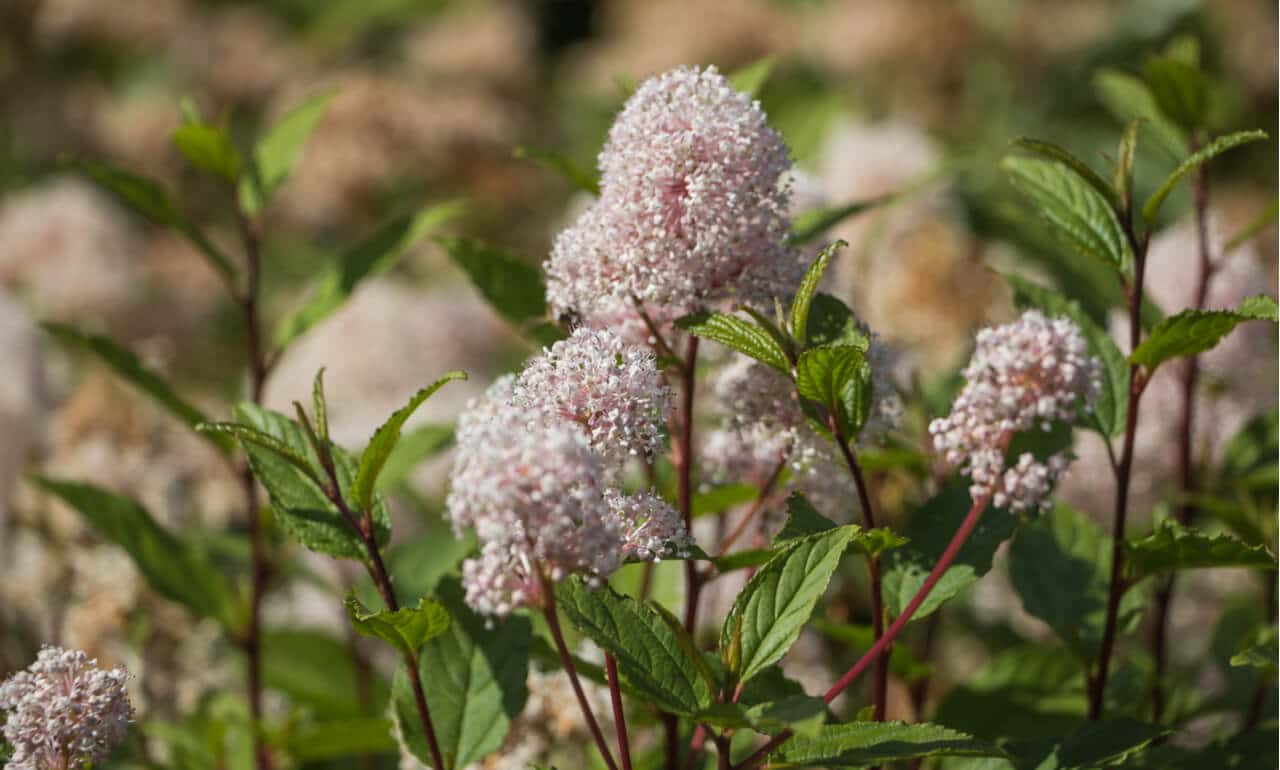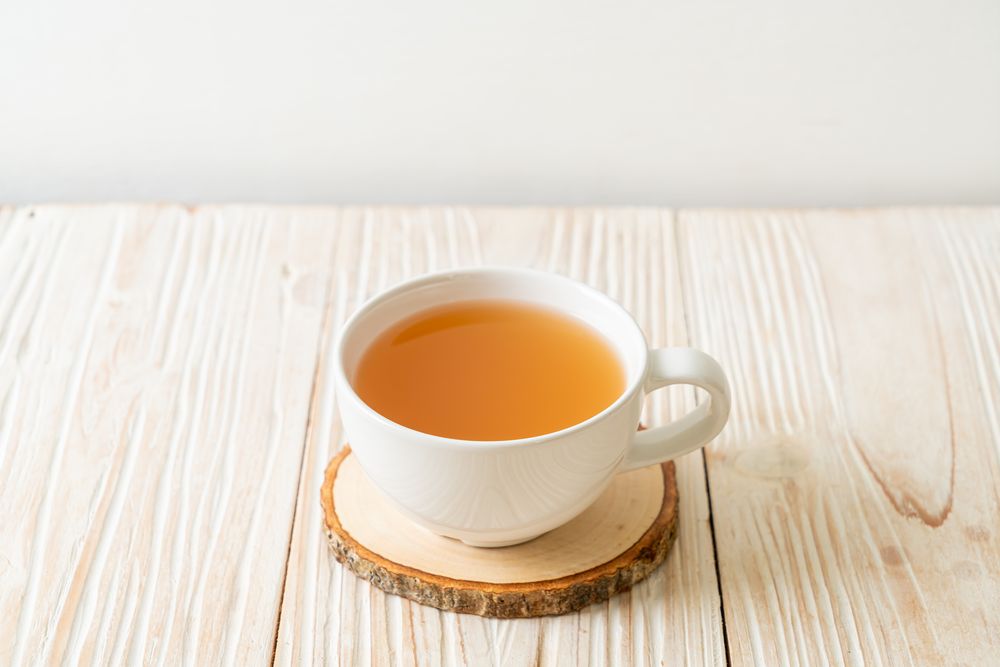[ad_1]
Red root is a herbal preparation from the roots of the Ceanothus Americanus (reddish origin) plant. It is a shrub native to the far eastern United States. It’s also referred to as wild snowball and hill nice. Although red root has a long history, only a few scientific studies have analysed its health benefits. However, since people used its leaves as an alternative to black herbal tea, it became famous as a tea making herb across the United States.
With the help of some Native Americans, other uses and health benefits of the red root have been determined. For example, people used it to treat shortness of breath, bloating, and constipation. In addition, people also used it as a digestive tonic. Furthermore, people also use it to treat diseases like cold, diarrhoea and improve blood flow. The most common way to use red root is in tea. The red root tea helps treat catarrh, fevers, sore throats, skin malignancies, venereal sores, and wound healing.
What is Red Root?
Red root is a herbal preparation made using the root of the Ceanothus Americanus plant. People have been using it in traditional medicine for hundreds of years. Therefore, it is popular among herbalists and natural medicine practitioners today.
The roots and leaves of this plant are rich in natural plant compounds such as alkaloids and tannins. It is due to these compounds that they are bitter and astringent. In addition, it contains tannins, a type of polyphenols that have antioxidant properties.
7 Health Benefits of Red Root
Suitable for Heart Health
Many studies suggest that natural plant products like tannins can have pharmacological effects on heart health. For example, they can help protect the heart and the blood vessels, which helps maintain healthy blood pressure levels.
In addition, tannins act as antioxidants and help reduce oxidative stress in the cells. According to research, oxidative stress levels can increase hypertension, and tannins can help control these levels. As a result, they help improve heart health.
Reduces the Risk of Genetic Mutation
Processed foods, pesticides and fertilisers have increased the risk of genetic mutation. Genetic mutations may change the protein synthesis and protein functioning in the body, causing ailments.
Tannins can have specific inhibitory effects on these mutagens in the human body. According to a study, natural plant extracts like tannins show antimutagenic potency and maintain human metabolic homeostasis because of their antioxidant properties.
Antibacterial Effects
Bacterial infections are very easy to contract and can cause severe ailments like E. coli. According to a review, natural plant-based alkaloids may prevent the growth and spread of bacteria and viruses. In addition, these alkaloids inhibit the transcription of various bacteria and prevent the expression of these pathogens that cause ailments. Because of these properties, people widely use red root in natural and herbal medicines, mostly DIY remedies and Ayurvedic treatments.
Researchers also saw that some of the natural compounds present in red roots inhibit the growth of certain types of oral pathogens. According to research, the methanol extract demonstrates these antimicrobial activities against four types of oral pathogens.
Beneficial for Thalassemia Patients
Thalassemia is an inherited blood disorder in which the body produces abnormal haemoglobin. It destroys the red blood cells, leading to anaemia. People suffering from this disorder often require blood transfusion and are at risk of enlarged spleen.
According to research, using red root with standard medication improved the blood test results. In addition, it ensures a long time between blood transfusion and a reduction in spleen size.
Beneficial for the Lymphatic System
The lymphatic system is part of the immune system and complementary to the circulatory system. The red root can support the lymphatic system. In addition, it can help the spleen and many disorders related to the lymphatic system. An effective lymphatic system prevents many ailments and promotes general wellbeing.
Red root is an effective DIY herbal remedy for the lymphatic system. The antioxidant properties of the red root can help boost the lymphatic system, eliminate free radicals and promote good health.
Improves Digestive System
Many homoeopathic practitioners consider red root extracts to be highly effective in promoting good gut health. Abdominal pains, constipation, irritable bowel syndrome are some disorders that red root can relieve.
In addition, it promotes the growth of good gut bacteria, which help in better food digestion and absorption, thus promoting overall good health.
Helps Detox
Modern lifestyles, diets and pollutants can increase the number of toxins in the body. Red root tea can help detox the body and eliminate these toxins through the lymphatic system.
In addition, it helps detox your system due to its antioxidant properties. It helps increase cell life, helping the body work better and more effectively.
Ways to Use Red Root Safely
If you want to include red root in your diet, it is essential to keep a few things in mind and avoid possible complications. First, while buying red root extract or other products, make sure to check the reviews and the vendor’s credibility. Check the complete list of ingredients. It is best to only buy it from vendors who have been certified by an independent lab.
You should read the instructions label properly and follow it. For example, a standard dose might be 1-5 drops in water, 1-3 times a day. But there isn’t enough scientific research available on it.
You can also use red root leaves to prepare a tincture. You can also use a concentrated mix to make detox drinks or use it as a supplement in your other foods.
Healthy Recipes Using Red Root
Detox Drink
- Preparation time: 10min
- Serves: 2
Ingredients
- Red root leaves/extract: 7-8
- Water: 2 cups
Method
- Put two cups of water in a pot, put the red root leaves/extract, and let it boil.
- Let the water boil for 5-10mins.
- Let the water cool down and then sieve out the ingredients and divide them into 2 cups.
- You can sip the detox water throughout the day.
Possible Side Effects of Red Root
Red root has a long history of use and many medicinal effects. However, there is not enough research to support these medical claims. Therefore, before using any product with red root extract, it is vital to contact a healthcare professional. It is also essential to ensure that you are not allergic to the product as it is a natural plant compound.
You should avoid using red root if you’re pregnant or nursing. There isn’t sufficient research evidence to conclude that it can harm the foetus or mother’s health. At the same time, there isn’t enough research to suggest otherwise. You should avoid using pure red root extract to stay on the safe side.
The red root may also lead to blood clotting. People having blood thinners or blood clotting disorders should avoid red root extracts. According to research, red root bark can show blood coagulating properties and cause clotting.
If you are allergic to red root, consuming any product with its extract can be pretty harmful. You can experience itchiness, swelling, hives, runny nose, watery eyes, and air passage swelling. Therefore, be careful while consuming red root extract.
Consult your doctor before using it to treat some health conditions. It can interfere with certain medications or health conditions. It is best to use it safely and avoid experimenting with DIY herbs. However, if you do, get a professional opinion first.
The Bottom Line
Red root is a herb with a long medicinal history. Today, many homoeopathic practitioners recommend red root extracts for specific health conditions like respiratory disorders and disorders related to the lymphatic system.
Red root shows remarkable antioxidant properties and antibacterial effects that can benefit health. However, there isn’t enough scientific evidence to support these medical claims. Therefore, it is essential to consult a doctor before adding it to your diet or using it as a DIY medicine. In addition, avoid it altogether if you are pregnant, nursing or on blood thinners as it can have some adverse effects.
Frequently Asked Questions (FAQs)
Q. What is red root good for?
A. Red root can help treat certain respiratory and lymphatic disorders. In addition, it improves heart health. It also has antioxidant properties, which effectively treats these conditions.
Q. How long does it take red root to work?
A. Several studies suggest that taking red root extracts consistently for 12 weeks shows neurological benefits. For example, it helps improve your mood. In addition, it helps reduce blood pressure levels, improve the respiratory system and gives better heart health.
Q. Is the red root the same as the bloodroot?
A. No, red root is a herb from the C. Americanus plant. At the same time, you get bloodroot from Sanguinaria Canadensis. In addition, bloodroot is extracted from the plant’s rhizome, whereas red root is a herbal extract from the root of the C. Americanus plant.
Q. How do you make a red root tincture?
A. You can prepare a red root tincture by taking some red root and chopping it up in a glass container. Fill it up with some alcohol or vinegar and mix it up, seal the container, and store it in a cool and dark place for 10-20 days. Shake the container twice every day and strain the contents after 20 days and keep it in a bottle with an airtight lid. After the process is complete, you can use it as needed.
Q. What are the side effects of red root?
A. Although the red root is a herb with several health benefits, it may have some side effects. For example, red root bark can show blood coagulating properties and cause clotting. Therefore, people on blood thinners should avoid its consumption. In addition, if you are allergic to plant compounds, the red root may lead to allergic symptoms like itchiness, swelling, hives, runny nose, watery eyes, and air passage swelling.
[ad_2]
Source link



